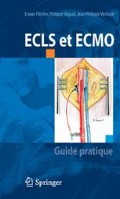Abstract
Depuis plusieurs années, l’utilisation de l’échocardiographie transthoracique (ETT) et œsophagienne (ETO) en réanimation est croissante (1, 2). Peu nombreux sont les centres de réanimation ou de chirurgie cardiaque ne disposant pas actuellement de cet outil parfaitement adapté à la prise en charge de nos patients. Dès la phase initiale, l’échocardiographie permet d’établir rapidement, et de manière non invasive, le diagnostic étiologique des états de choc et des détresses respiratoires, grâce à sa capacité d’analyse anatomique et fonctionnelle, en temps réel, des fonctions systolo-diastoliques ventriculaires gauche et droite. La dernière conférence de consensus internationale sur le monitorage hémodynamique dans la prise en charge des états de choc ne recommande pas l’utilisation en première intention du cathétérisme artériel pulmonaire (CAP) chez les patients en état de choc. À l’inverse, le recours à l’échocardiographie est conseillé chez les patients présentant des signes cliniques de défaillance myocardique avec état de choc persistant après optimisation de la volémie (3). Dans les situations de choc cardiogénique ou d’arrêt cardiaque réfractaire au traitement médical, la mesure des bas débits cardiaques extrêmes par les outils de monitoring hémodynamique classiques (CAP, méthodes de thermodilution transpulmonaire (Picco®) ou encore Doppler oesophagien) n’a pas été validée. De même, en cas d’assistance circulatoire mécanique en place, les fl ux parasites engendrés par la pompe rendent ininterprétables les mesures recueillies par thermodilution. C’est donc naturellement que l’échographie s’est imposée comme un moyen de diagnostic et de monitorage privilégié. L’analyse échocardiographique intervient avant, pendant et après l’implantation de l’assistance circulatoire (4–7).
Preview
Unable to display preview. Download preview PDF.
Références
Cholley BP, Vieillard-Baron A, Mebazaa A (2006) Echocardiography in the ICU: time for widespread use. Intensive Care Med 32(1): 9–10
Vieillard-Baron A et al, (2008) Echocardiography in the intensive care unit: from evolution to revolution? Intensive Care Med 34(2): 243–9
Antonelli M et al. (27-28 April 2006) Hemodynamic monitoring in shock and implications for management. International Consensus Conference, Paris, France. Intensive Care Med 2007 33(4): 575–90
Augoustides J et al. (2003) CASE 1-2003. The use of intraoperative echocardiography during insertion of ventricular assist devices. J Cardiothorac Vasc Anesth 17(1): 113–20
Heath MJ, Dickstein ML (2000) Perioperative management of the left ventricular assist device recipient. Prog Cardiovasc Dis 43(1): 47–54
Scalia GM et al. (2000) Clinical utility of echocardiography in the management of implantable ventricular assist devices. J Am Soc Echocardiogr 13(8): 754–63
Simon P et al. (1991) Transesophageal echocardiographic evaluation in mechanically assisted circulation. Eur J Cardiothorac Surg 5(9): 492–7
Slama MA et al. (1996) Diagnostic and therapeutic implications of transesophageal echocardiography in medical ICU patients with unexplained shock, hypoxemia, or suspected endocarditis. Intensive Care Med 22(9): 916–22
Vignon P et al. (1994) Diagnostic accuracy and therapeutic impact of transthoracic and transesophageal echocardiography in mechanically ventilated patients in the ICU. Chest 106(6): 1829–34
Mets B (2000) Anesthesia for left ventricular assist device placement. J Cardiothorac Vasc Anesth 14(3): 316–26
Holman WL et al. (1994) Infl uence of longer term left ventricular assist device support on valvular regurgitation. ASAIO J 40(3): M454–9
Irish MS et al. (1998) Cervical ECMO cannula placement in infants and children: recommendations for assessment of adequate positioning and function. J Pediatr Surg 33(6): 929–31
Baker JE et al. (2004) Profound hypoxemia resulting from shunting across an inadvertent atrial septaltear after left ventricular assist device placement. Anesth Analg 98(4): 937–40 table of contents
Jegger D et al. (2006) A novel technique using echocardiography to evaluate venous cannula performance perioperatively in CPB cardiac surgery. Eur J Cardiothorac Surg 29(4): 525–9
George SJ, Black JJ, Boscoe MJ (1995) Intraoperative transoesophageal echocardiography for implantation of a pulsatile left ventricular assist device. Br J Anaesth 75(6): 794–7
Rose AG et al. (2000) Partial aortic valve fusion induced by left ventricular assist device. Ann Thorac Surg 70(4): 1270–4
Nakatani S et al. (1996) Left ventricular echocardiographic and histologic changes: impact of chronic unloading by an implantable ventricular assist device. J Am Coll Cardiol 27(4): 894–901
Nussmeier NA et al. (2003) Anesthetic management for implantation of the Jarvik 2000 left ventricular assist system. Anesth Analg 97(4): 964–71 table of contents
Imren Y et al. (2008) The importance of transesophageal echocardiography in diagnosis of pericardial tamponade after cardiac surgery. J Card Surg 23(5): 450–3
Deye N (2008) Devenir des patients traités par assistance circulatoire périphérique en réanimation médicale pour état de choc ou arrêt cardiaque réfractaire, in congrès SRLF
Moon MR et al. (1997) Septal function during left ventricular unloading. Circulation 95(5): 1320–7
Mandarino WA et al. (1997) Right ventricular performance and left ventricular assist device fi lling. Ann Thorac Surg 63(4): 1044–9
Vieillard-Baron A et al. (2002) Echo-Doppler demonstration of acute cor pulmonale at the bedside in the medical intensive care unit. Am J Respir Crit Care Med 166(10): 1310–9
Jardin F, Dubourg O, Bourdarias JP (1997) Echocardiographic pattern of acute cor pulmonale. Chest 111(1): 209–17
Smith MD et al. (1992) Value and limitations of transesophageal echocardiography in determination of left ventricular volumes and ejection fraction. J Am Coll Cardiol 19(6): 1213–22
Aissaoui (2008) Prédiction du succès du sevrage de l’ECMO après assistance circulatoire pour choc cardiogénique réfractaire: comparaison d’indices cliniques, hémodynamiques et échocardiographiques, in SRLF, Paris
Khan T et al. (2003) Dobutamine stress echocardiography predicts myocardial improvement in patients supported by left ventricular assist devices (LVADs): hemodynamic and histologic evidence of improvement before LVAD explantation. J Heart Lung Transplant 22(2): 137–46
Author information
Authors and Affiliations
Rights and permissions
Copyright information
© 2010 Springer-Verlag France, Paris
About this chapter
Cite this chapter
Basquin, C., Flécher, E., Seguin, P. (2010). ECMO et échocardiographie. In: ECLS et ECMO. Springer, Paris. https://doi.org/10.1007/978-2-287-99773-0_16
Download citation
DOI: https://doi.org/10.1007/978-2-287-99773-0_16
Publisher Name: Springer, Paris
Print ISBN: 978-2-287-99772-3
Online ISBN: 978-2-287-99773-0
eBook Packages: MedicineMedicine (R0)

